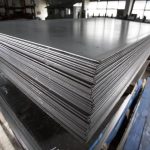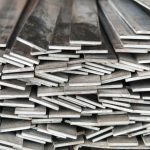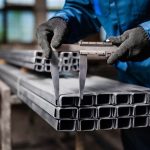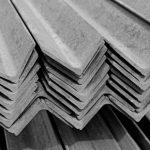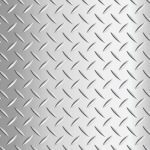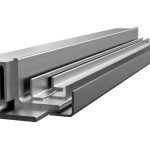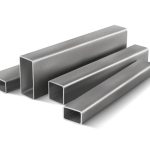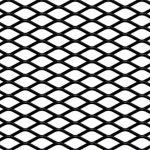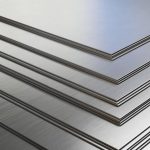When it comes to material selection for metal fabrication projects, the choice between stainless steel sheets and aluminium sheets is crucial. In this blog, Ezimetal sheds light on the distinct properties, advantages and limitations of both materials. Understanding the pros and cons of steel and aluminium sheets is essential for informed decision making in diverse applications, ensuring optimal performance and cost effectiveness.More…
Choosing the Right Flat Bar for Your Metalworking Projects
Selecting the right flat bar is a critical decision in metalworking projects, impacting success in terms of performance, durability and overall quality. Factors such as size, material and intended application play pivotal roles in achieving optimal results. In this guide, trusted metal fabricator, Ezimetal, navigates through the considerations essential for choosing the perfect flat bar for your metalworking projects.More…
Exploring the World of Expanded Mesh: Applications and Benefits
Exploring the Applications and Benefits of Expanded Mesh
In the world of modern construction and design, expanded mesh is a versatile and indispensable material, finding applications in diverse industries. As a leading steel and metal fabricator in Newcastle, Ezimetal recognises the significance of expanded mesh in various projects. This blog post aims to shed light on the extensive applications and benefits of expanded mesh, from innovative architectural designs to practical landscaping and industrial solutions.More…
Innovative Uses of Threaded Pipes in DIY Projects
Exploring Creative Applications of Threaded Pipes in DIY Projects
Unlock the creative potential of threaded pipes in your DIY endeavours with Ezimetal, a trusted metal fabricator and supplier in Newcastle. Explore the versatility of these sturdy materials and discover how they can transform various aspects of home improvement and crafting projects.More…
A Guide to Steel Channels and Their Applications
Quick Guide to Steel Channels and Their Applications
Steel channels are essential components across diverse industries, providing structural support, framing and reinforcement. In this comprehensive guide, NSW metal fabricators, Ezimetal, explore the various types, sizes and applications of steel channels, shedding light on their importance in construction, manufacturing, infrastructure and transportation.More…
Tips for Selecting the Best Sliding Door Track for Your Home
Top Tips for Selecting the Best Sliding Door Track for Your NSW Home
Choosing the right sliding door track is a crucial decision for shed owners looking to enhance the functionality of their workspaces. As a trusted steel and metal fabricator in Newcastle, Ezimetal understands the importance of selecting the perfect sliding door tracks and rollers. Here, we provide practical tips on factors to consider, types of tracks available, compatibility, installation, maintenance and budget considerations.More…
The Versatility of Angle Iron in Metal Fabrication
Harnessing the Versatility of Angle Iron in Metal Fabrication
Angle iron, a fundamental component in the world of metal fabrication, plays a pivotal role in shaping structures across various Australian industries. As a reputable metal fabricator and supplier in Newcastle, Ezimetal understands the importance of angle iron in construction, manufacturing and DIY projects. In this blog post, we’ll discuss the diverse applications, remarkable versatility, strength and durability of angle iron.More…
Understanding Floor Plate or tread plate: Uses and Varieties
Distinguishing Uses and Varieties of Floor Plate and Tread Plate
Floor plates, also known as tread plates, play a crucial role in construction and industrial settings, offering a versatile solution to enhance safety and durability. Commonly referred to as steel floor plates or aluminium tread plates, these components serve as integral elements in various industrial applications. In this blog post, Ezimetal dive into the world of industrial flooring, exploring the different varieties available to cater to the unique needs of different projects.More…
Benefits and Applications of Aluminium Angle in Building Structures
Enhancing Building Integrity with Aluminium Angles
In the construction world, the search for durable, lightweight and aesthetically pleasing building materials has led to the widespread adoption of aluminium angles. Architects and builders alike are increasingly recognising the numerous advantages and diverse applications of these aluminium profiles in crafting robust and visually appealing building structures.
Ezimetal, a premium supplier of construction materials in Newcastle, offers high quality metal fabrication, including Aluminium angles, for all of your building needs.More…
C Channel vs. Rectangular Hollow Section (RHS): Selecting the Ideal Material for Your Project
Decoding Material Choices between C-Channel and Rectangular Hollow Section
In the dynamic world of construction, selecting the right materials is crucial for the success of any project. Among the choices available, two popular options are often considered for their structural integrity and versatility: C channels and Rectangular Hollow Sections (RHS). In this blog post, Ezimetal dive into the characteristics, advantages and disadvantages of these steel profiles, helping you make an informed decision based on your project’s unique requirements.More…
Unveiling the Role of Steel Mesh in Modern Construction
Steel mesh is a critical component in modern construction, offering versatility and strength that significantly contributes to the durability and safety of various structures. Ezi Metal, a leading steel and metal fabricator in Newcastle, plays a pivotal role in supplying high quality steel mesh to the construction industry. In this blog post, we’ll dive into the multifaceted applications of steel mesh in construction, highlighting its importance in various projects.More…
Choosing the Right Aluminium Sheet for Your DIY Project
Selecting the Perfect Aluminium Sheet for Your DIY Project
When it comes to tackling DIY projects, the choice of materials can significantly impact the success and durability of your creation. One material that stands out for its versatility and strength is aluminium sheets. However, with various types available, it’s crucial to understand how to choose the right one for your specific project. In this guide, trusted aluminium sheet supplier, Ezimetal, explores the different types of aluminium sheets, their applications, key factors to consider and offers practical tips for selecting the perfect sheet for your DIY endeavours.More…
Galvanized or Black Steel finish?
Should I order my Steel in Galvanized or Black Steel finish?
This question is quite common to our team!More…
I’m confused by pipe sizes. How do they work?
Pipe sizes can be pretty confusing. That’s because sometimes people talk about the outside diameter (OD) while others talk about the inside diameter (ID).More…
Meet the Boss
If you’ve dropped in to see us at Ezimetal Raymond Terrace, there’s a good chance you’ve met this guy. Meet Warren “Woc” Lawrence. Yes, “Woc” – that’s what everyone calls him, and that’s what he calls himself.More…

